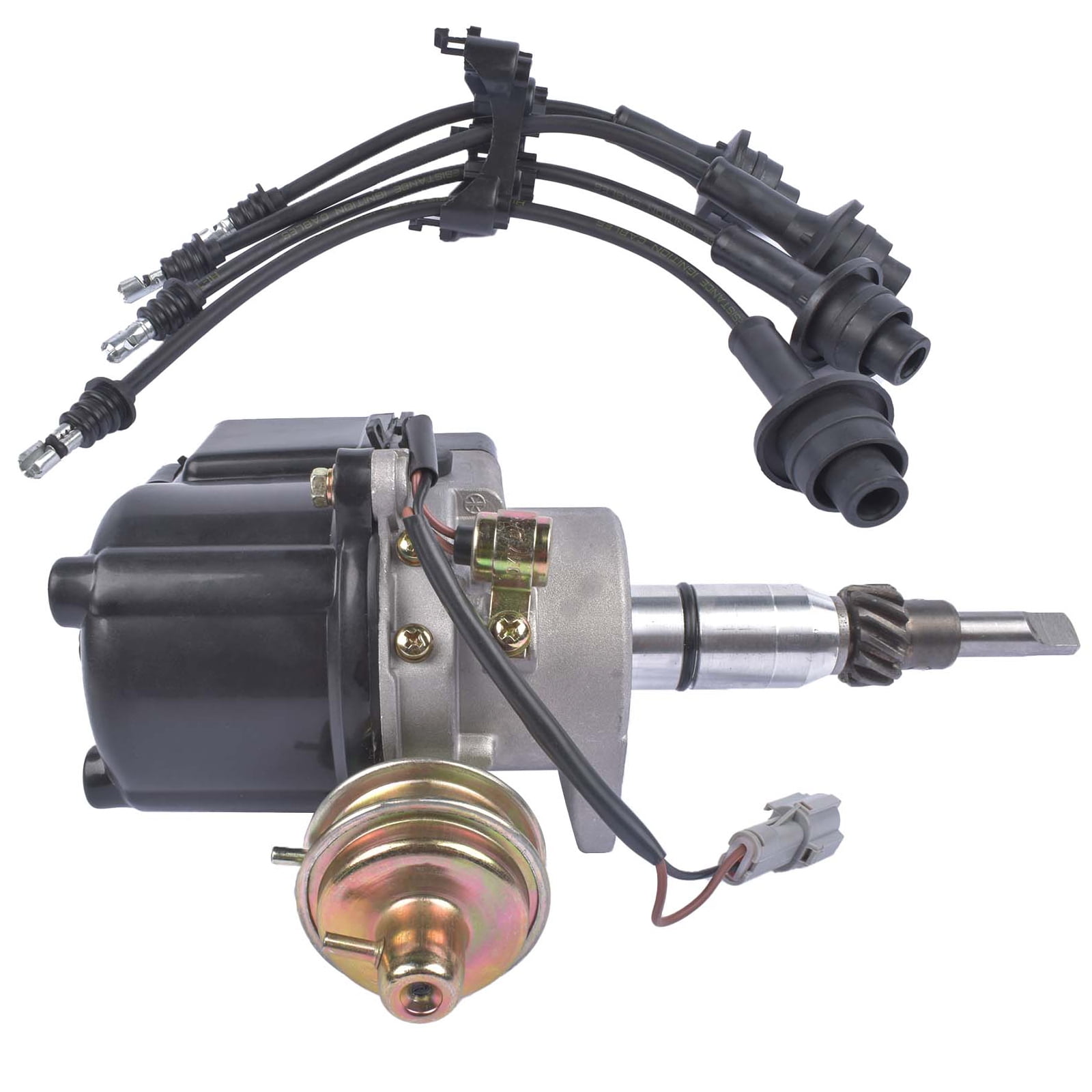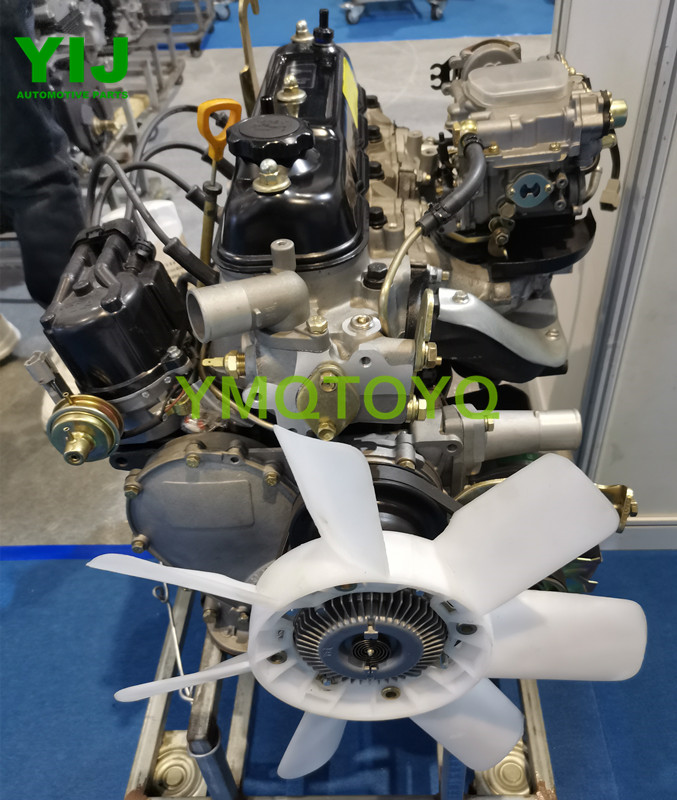Understanding the Mechanics Behind the 4Y Engine’s Power and Durability
Understanding the Mechanics Behind the 4Y Engine’s Power and Durability
Blog Article
Why the Engine Is the most effective Option for Efficiency and Effectiveness in Your Vehicle
The engine remains a critical element in automobile style, mostly due to its substantial influence on both efficiency and performance. As innovations in innovation enable smaller engines to deliver amazing power while enhancing fuel economic climate, the combination of functions such as turbocharging and hybrid systems becomes increasingly crucial.
Comprehending Engine Types
Comprehending the various types of engines is important for enhancing performance and efficiency in auto style. The main engine types include inner burning engines (ICE), electric engines, and hybrid systems, each offering distinct advantages and restrictions.
Internal burning engines, which can be more categorized into fuel and diesel versions, count on the combustion of gas to create power. Gas engines normally offer higher RPMs and far better acceleration, while diesel engines are recognized for their torque and fuel efficiency, making them suitable for durable applications.
Electric engines, on the various other hand, use electric motors powered by batteries or gas cells. They provide instantaneous torque distribution, leading to smooth velocity and reduced emissions. The performance of electric engines is significantly greater than that of ICEs, making them a prominent selection for eco-conscious consumers.
Crossbreed systems integrate both inner combustion and electrical engines, leveraging the staminas of both modern technologies. They enhance gas consumption by utilizing electric power at reduced speeds and changing to gasoline or diesel for higher rates or heavier tons.
Choosing the ideal engine kind is vital for attaining wanted efficiency metrics and environmental sustainability in contemporary auto engineering.
The Influence of Engine Size
Engine dimension regularly plays a pivotal role in figuring out a vehicle's performance and effectiveness. Generally determined in liters or cubic centimeters, engine size directly influences the power outcome and torque qualities of an automobile.
Nevertheless, increased engine dimension usually associates with decreased gas performance. Smaller engines can deliver ample performance for everyday driving while promoting much better effectiveness, making them a prominent choice in portable and mid-size lorries.
In addition, developments in engine layout, such as turbocharging and direct gas injection, permit smaller engines to attain power levels equivalent to their larger equivalents. This pattern emphasizes the importance of not only focusing on engine dimension however additionally thinking about total automobile layout and innovation (4y engine). Inevitably, the effect of engine dimension on performance and performance underscores the requirement for customers to evaluate their details driving requirements and choices when selecting an automobile
Advanced Engine Technologies
Technologies in engine technologies have dramatically improved the landscape of automotive performance and effectiveness, structure upon the fundamental principles developed by engine dimension. Notably, developments such as turbocharging and direct fuel injection have made it possible for smaller sized engines to supply power degrees formerly linked with bigger counterparts. Turbochargers compress air entering the engine, allowing for enhanced power output without a matching boost in engine size, while direct injection optimizes fuel delivery, enhancing combustion efficiency.
Furthermore, variable valve timing systems have actually become a critical innovation, allowing engines to adjust valve operation based upon driving problems. This flexibility improves both performance throughout velocity and gas effectiveness throughout travelling. Hybrid and electric engine technologies further illustrate the shift in automobile design, incorporating typical inner burning engines with electric motors to maximize performance while lowering discharges.
Additionally, developments in materials scientific research have actually brought about lighter, a lot more resilient engine components, better improving performance and long life. The combination of advanced electronic devices and get more engine control systems likewise permits real-time changes, making sure ideal performance throughout various problems. Collectively, these innovative engine modern technologies not only boost automobile performance however also add to a more lasting automotive future, showing the ongoing evolution of engine layout.
Harmonizing Power and Efficiency
Striking a balance in between power and performance is critical in modern automotive design as suppliers seek to fulfill progressively strict discharges regulations while pleasing consumer need for performance (4y engine). The obstacle lies in enhancing engine attributes to supply robust power outcome without giving up fuel economic climate
To attain this balance, engineers utilize numerous techniques, such as turbocharging, which enhances engine power forcibly in more air, permitting a smaller sized engine displacement that improves fuel efficiency. Variable shutoff timing innovations likewise play a considerable role, making it possible for engines to adjust their performance qualities based upon driving conditions, thereby improving both power and performance.
Moreover, developments in materials and producing methods have brought about lighter engine elements, which decrease general automobile weight and boost fuel efficiency without endangering power. Hybrid modern technologies have actually additionally emerged as a feasible remedy, incorporating standard interior combustion engines with electric powertrains to provide an increase in performance while preserving reduced exhausts.

Future Patterns in Engine Style

Furthermore, the advancement of innovative materials, such as lightweight composites and high-strength alloys, is readied to change engine elements. These materials not only minimize weight but additionally boost thermal effectiveness, thus maximizing efficiency. Furthermore, manufacturers are exploring variable compression ratios, allowing engines to adjust to various driving problems, enhancing both power outcome and fuel economy.
Better, the increase of artificial intelligence and artificial intelligence in engine layout is allowing anticipating maintenance and real-time efficiency optimization. This technology can lead to engines that self-adjust for maximum Website efficiency based upon driving patterns.

Conclusion
To conclude, the engine acts as an essential part in attaining optimal efficiency and performance in modern-day vehicles. Advanced technologies, such as turbocharging and crossbreed systems, enhance power output while reducing gas consumption and discharges. The interplay between engine dimension and design continues to progress, driving innovations that balance thrilling efficiency with environmental sustainability. As automotive design progresses, the concentrate on creating reliable, effective engines will stay extremely important in shaping the future of transportation.
Furthermore, developments in engine design, such as turbocharging and straight fuel injection, enable smaller sized engines to attain power degrees comparable to their bigger equivalents.Technologies in engine technologies have dramatically reshaped the landscape of auto performance and effectiveness, structure upon the fundamental principles developed by engine size. Turbochargers compress air getting in the engine, enabling for boosted power result without a matching rise in engine size, while straight injection optimizes gas shipment, boosting combustion performance.
Hybrid and electric engine innovations further illustrate the change in vehicle layout, combining traditional internal burning engines with electrical motors to make best use of effectiveness while decreasing exhausts.
Jointly, these advanced engine technologies not just boost lorry performance yet also add to a much more lasting auto future, showing the continuous development of engine design. (4y engine)
Report this page